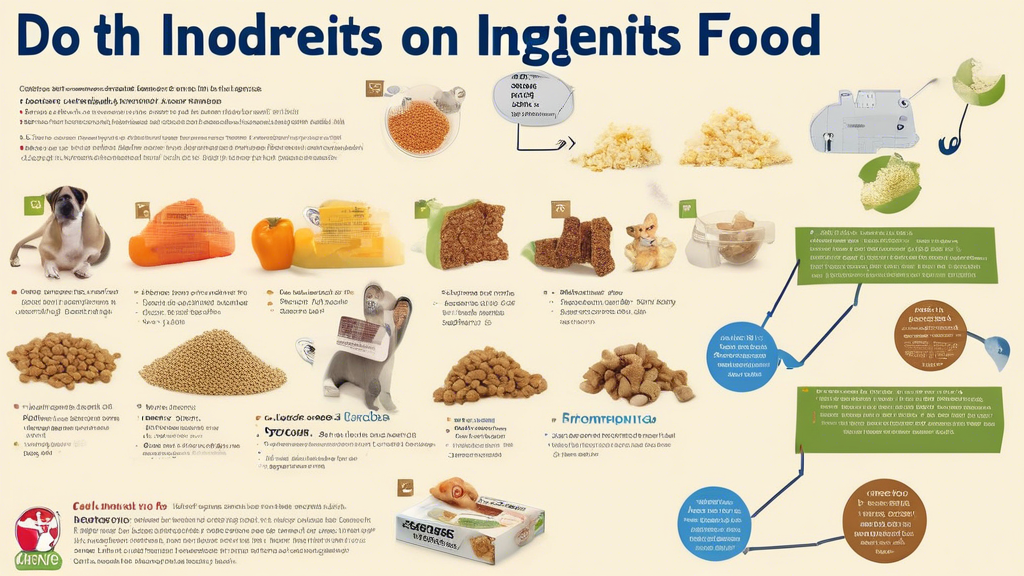**SEO-Optimized Introduction for How to Store Dry Dog Food**
**Understanding the Importance of Proper Storage for Dry Dog Food**
Ensuring optimal storage for dry dog food is crucial for maintaining the health and well-being of your furry companions. Spoiled or contaminated food can lead to a variety of health issues, including digestive upset, nutrient deficiencies, and even more severe consequences. This comprehensive guide will provide step-by-step instructions on how to effectively store dry dog food, preventing spoilage and preserving its nutritional value.
**Addressing Key Considerations for Extended Shelf Life**
When storing dry dog food, it is essential to address several key factors that influence its shelf life. These factors include using airtight containers to prevent moisture and pest infestation, maintaining optimal storage temperatures, and implementing effective cleaning and rotation practices. By understanding the importance of proper storage techniques, you can ensure your dog’s food remains fresh, palatable, and safe for consumption.
I. Proper Storage Techniques for Dry Dog Food
A. Importance of Airtight Containers to Prevent Moisture and Pests
To preserve the freshness and quality of dry dog food, it’s crucial to store it in airtight containers. This will prevent moisture from entering, which can cause spoilage and growth of bacteria. Additionally, airtight containers keep out pests, such as insects or rodents, which can contaminate the food and pose health risks to your pet.
- Choose durable and opaque containers: Opt for containers that are strong enough to withstand pet chewing and are opaque to protect the food from sunlight, which can degrade nutrients.
- Properly seal containers: Ensure that the lids of the containers fit tightly to prevent any air or moisture from entering.
B. Optimal Storage Temperatures and Humidity Levels
Dry dog food should be stored in a cool, dry place with moderate humidity levels. Ideal storage temperatures range between 40°F (4°C) and 80°F (27°C). Extremes in temperature can compromise the food’s nutritional value and accelerate spoilage.
- Avoid extreme temperatures: Keep the food away from direct sunlight, heat sources, or freezing conditions.
- Control humidity: Store the food in an area with relative humidity below 50% to prevent moisture absorption.
The #1 Free Source for Pitbull & Bully Pedigrees!

## Avoiding Spoilage and Maintaining Freshness
Ensuring that your dry dog food remains unspoiled and retains its nutritional value is paramount for your pet’s health and well-being. Here are essential measures to prevent spoilage and maintain freshness:
1. Spotting Spoilage Indicators
Timely detection of spoilage is crucial. Inspect your dry dog food regularly for:
* **Mold:** Green, blue, black, or orange discolorations indicate mold growth.
* **Rancidity:** A sour or stale odor, often caused by exposure to oxygen or heat.
* **Weevils or other pests:** Visible insects or their larvae can contaminate the food.
2. Implementing Proper Cleaning and Rotation
Proper cleaning and rotation practices help eliminate potential spoilage triggers:
* **Clean storage containers:** Thoroughly wash airtight containers before storing fresh food.
* **Regular rotation:** Use the first in, first out approach to ensure that older food is consumed before newer batches.
* **Portion control:** Avoid overfilling containers to prevent clumping and spoilage.
3. Preserving Freshness with Additives
In certain cases, preservatives or additives can extend the shelf life of dry dog food:
* **Antioxidants:** These agents, such as vitamin E, help prevent rancidity by neutralizing free radicals.
* **Mold inhibitors:** Specific additives, like calcium propionate, can suppress mold growth.
**Additional Tips for Maintaining Freshness**
* **Cool and dry storage:** Ideally, store dry dog food in a cool (below 80°F) and dry (less than 60% humidity) environment.
* **Avoid direct sunlight:** UV rays can accelerate spoilage.
* **Regularly monitor:** Check the food periodically for any signs of spoilage or pest activity.
* **Discard spoiled food:** If you suspect spoilage, discard the entire batch promptly.
By following these practices, you can effectively prevent spoilage, maintain the freshness of your dry dog food, and ensure that your pet receives the best possible nutrition from their meals.
**Conclusion**
Maintaining the freshness and nutritional integrity of dry dog food is crucial for the well-being of our furry companions. Proper storage techniques, including airtight containers, optimal temperature and humidity levels, and diligent cleaning practices, extend shelf life and prevent spoilage. Recognizing signs of deterioration and implementing appropriate remedies ensure that our canine friends receive nutritious and palatable meals. By adhering to these recommendations, pet owners can confidently provide their dogs with the optimal nutritional support they deserve. Neglecting these storage protocols can compromise food quality, leading to health risks and unnecessary veterinary expenses. Therefore, prioritizing proper storage and handling practices is an essential aspect of responsible pet ownership.













Leave A Comment